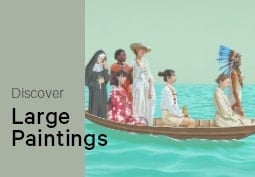Articles & Features
Andy Warhol Portraits: A Definitive Guide

By Naomi Martin
“The reason I’m painting this way is that I want to be a machine.”
Andy Warhol, Art News, 1962
The Art of Screen-Printing
Campbell soup cans, Brillo boxes, Marylin Monroe’s portrait reiterated in bright and vivid colours – Andy Warhol produced some of the most iconic images of the 20th century, establishing himself as one of the most influential artists of all time. A leading figure of the Pop Art movement, Warhol was enthralled by the aesthetics of fame and popular culture, and although his artistic talent covered a wide range of visual media, he is particularly renowned for his screen-printed artworks, which utterly transformed modern art. Throughout his career, Warhol screen-printed commissioned portraits from photographs, but also appropriated images of celebrities, turning them into silkscreen prints reflecting his fascination with fame while dealing with deeper issues of identity, legacy, and death.
Drawn to the mechanical nature of the process, Warhol turned to photographic screen-printing in 1962, which gave him the freedom to reproduce with ease the imagery of popular culture and mass-media he was fascinated with. While he did not invent the screen-printing process per se, Warhol nonetheless developed his own distinctive technique combining brightly coloured hand-painted stencils with photographs. Despite being initially attracted to the mechanical and mass-produced aspect, his technique was so distinctive that his silkscreen-prints would be – and still are – instantly identified as ‘Warhols’. From celebrities to political figures and of course, himself, we dive into Andy Warhol’s most significant screen-print portraits.
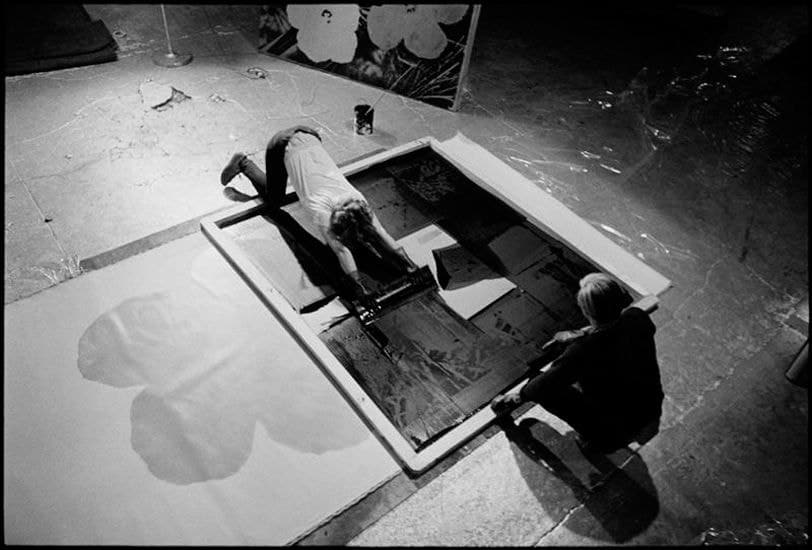
Warhol’s Celebrities
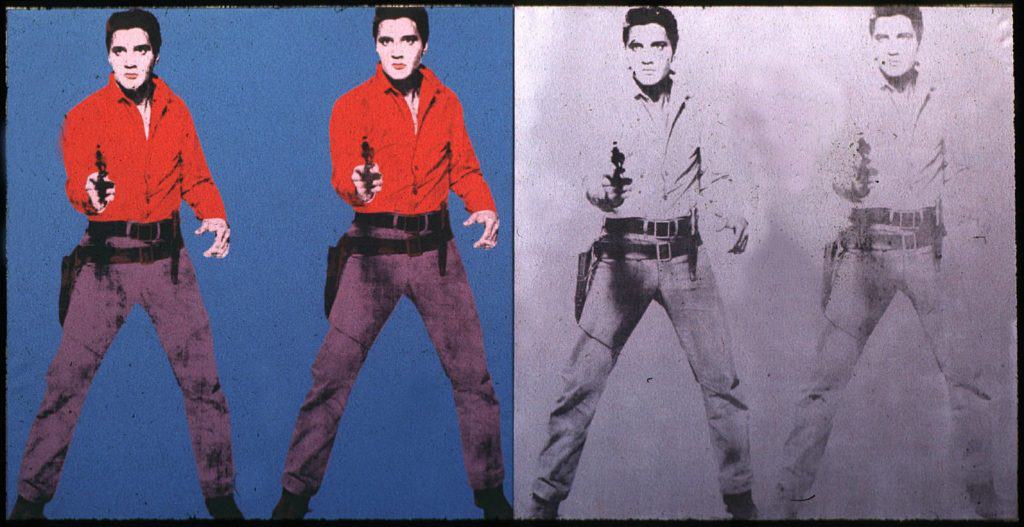
Warhol’s fascination with popular culture and fame led him to produce a great deal of screen-prints depicting portraits of celebrities, experimenting with variations in colours and multiplication. Seriality was something which captivated Warhol, the concept of repetition became one of his strategies within the neo-avant-garde, which challenged all traditional notions of art. The repetition and mechanisation of his work also denoted the underlying dark side of Pop Art, implying emotional detachment and loss of identity in the wake of a boom of mass-consumption – in particular the idea that fame and celebrities were a consumable and expendable product. Today, these massively recognisable portraits epitomise the very imagery of popular culture.
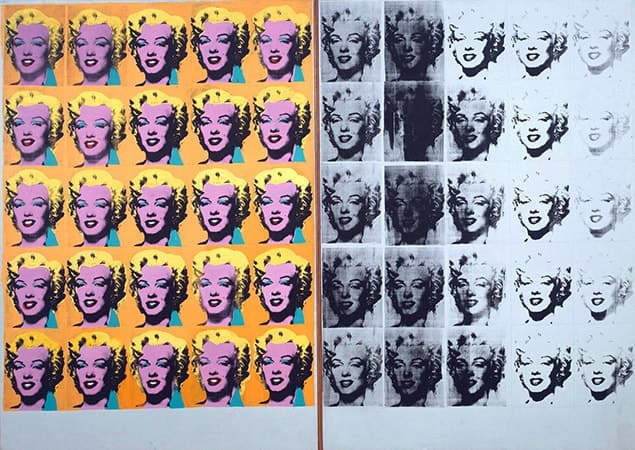
During the early 1960s, while living and working in New York, Warhol started to create his celebrity portraits. Using tabloid photographs or publicity shots for his screen-prints, Warhol produced an impressive number of celebrity portraits, including Elvis Presley, Elizabeth Taylor, Jackie Kennedy and Marylin Monroe, who was Warhol’s first silkscreen-print subject. Upon the actress’s death in 1962, Warhol instantly began to reproduce her portrait, based on a photograph from 1953 taken by Gene Kornman for the promotion of Niagara. Marilyn Diptych 1962 is arguably one of Warhol’s most iconic and celebrated works, made up of two canvases repeating Monroe’s portrait in a grid pattern. One side is bright and vibrant, the other monochrome and gloomy – two contrasting sides capturing both the star’s sparkling public façade, and the dim reality of her difficult and troubled private life.
Although Warhol expanded his subject matter throughout the years, his obsession with fame and celebrity endured as he continued to produce celebrity portraits in the later part of his career, including Judy Garland, Mick Jagger, Debbie Harry and Dolly Parton.
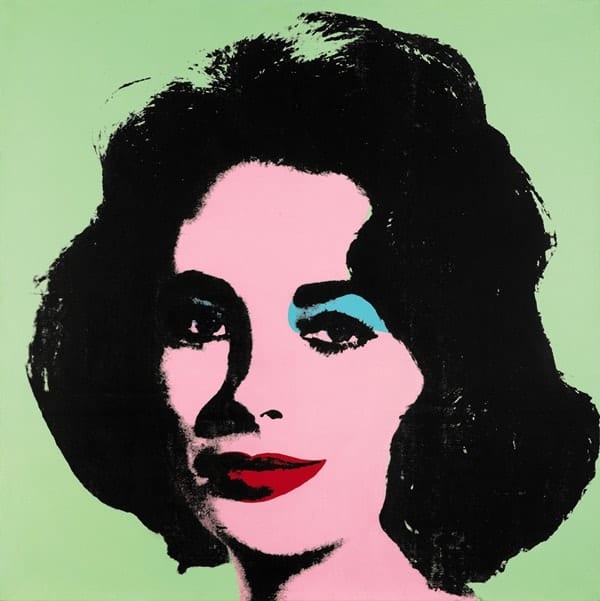
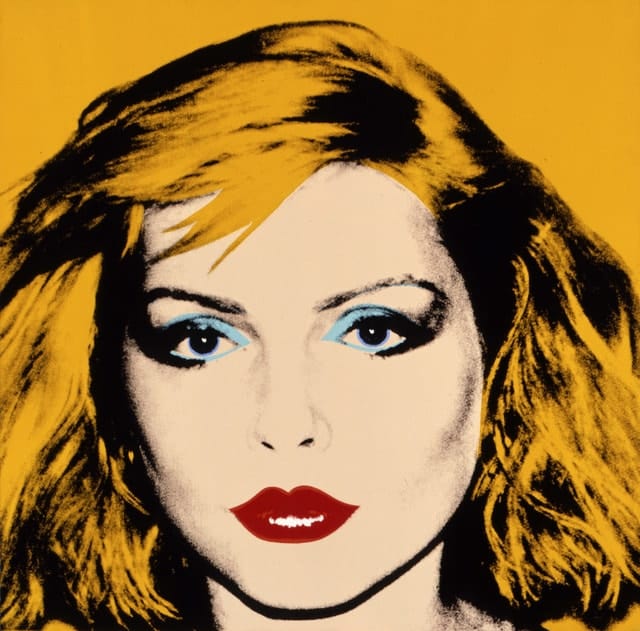
“Isn’t life a series of images that change as they repeat themselves?”
Andy Warhol
Commissioned Portraits
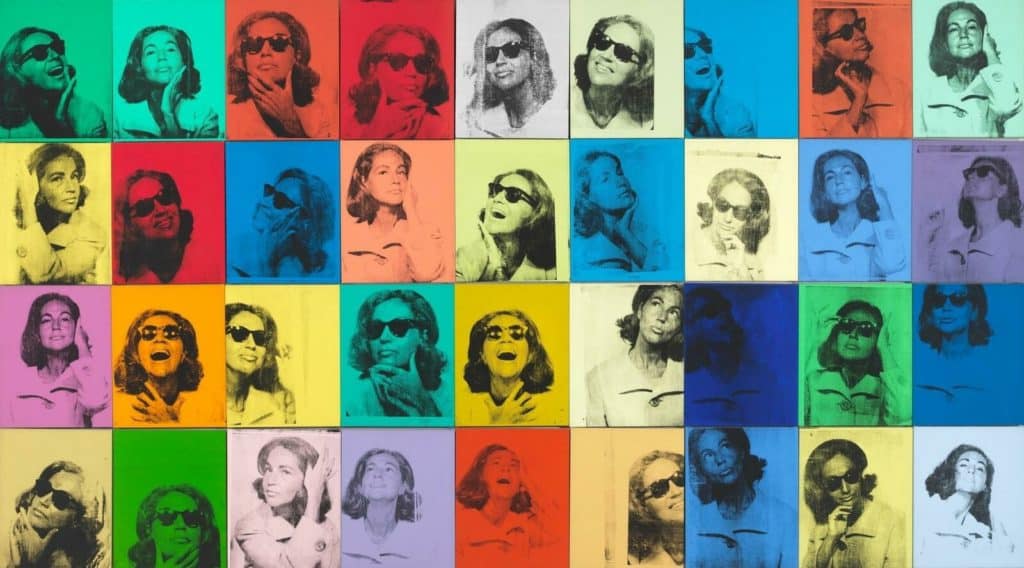
In the mid-sixties and early 70s, Warhol truly revolutionized and revived the social portrait as a legitimate art form. The artist started to work on commissions, and would rarely refuse any. His first commissioned society portrait was of Ethel Scull in 1963, a well-known collector of modern and Pop Art. In November 1979, Warhol’s major exhibition Portraits of the 70s opened at the Whitney Museum, and allowed his private portrait-painting business to flourish extensively.
In the early eighties, Warhol was painting about fifty clients a year, charging around $25,000 per commission, and $40,000 for a two-panel portrait – using this lucrative business to fund his other ambitious projects and sustain The Factory. Essentially a commercial enterprise, these society portraits bolstered Warhol’s examination of himself as a ‘machine’, and played off of his enthrallment with fame, sustained by his famous motto: “In the future, everyone will be famous for 15 minutes.”
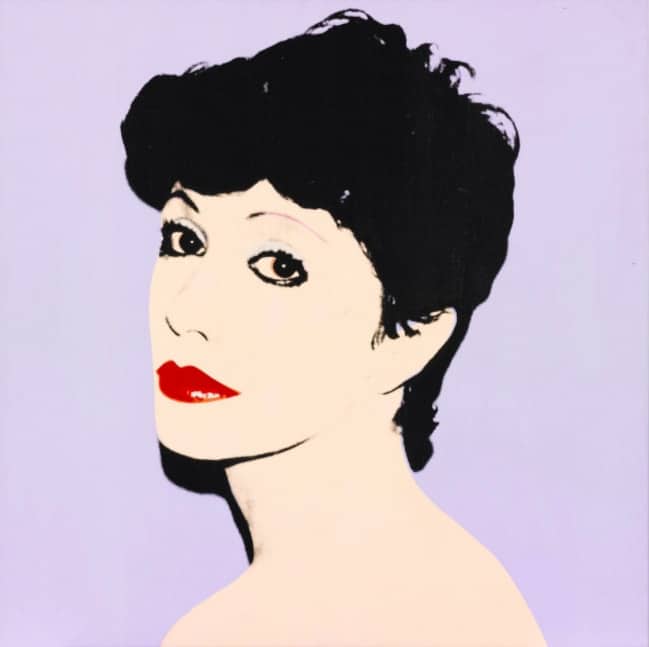
For his portraits, Warhol would use a Polaroid camera to shoot his subjects – referring to it as his ‘pencil and paper’. The Polaroids would then be blown up and converted into negatives, from which Warhol would trace the sitter’s feature onto a canvas and create his silkscreen-prints. For Warhol, the potential of photography to shape and reaffirm the cultural obsessions of the public was essential, which is why he would also use it as a filter to mediate with society. More so, the use of Polaroids was an extremely fitting medium to reinforce his concerns with the ephemerality of fame and appearances. Warhol was also an animal lover, and subsequently created commissioned portraits of pets throughout his career.
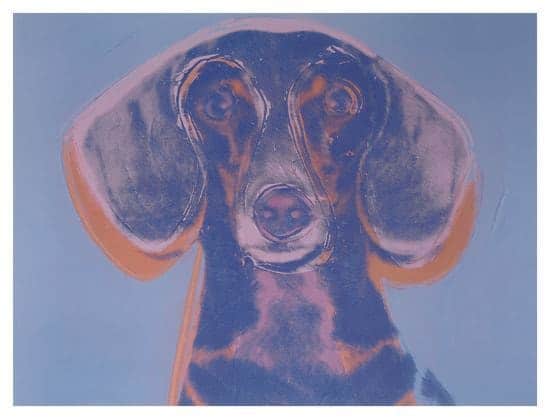
Fellow Artists and Trailblazers
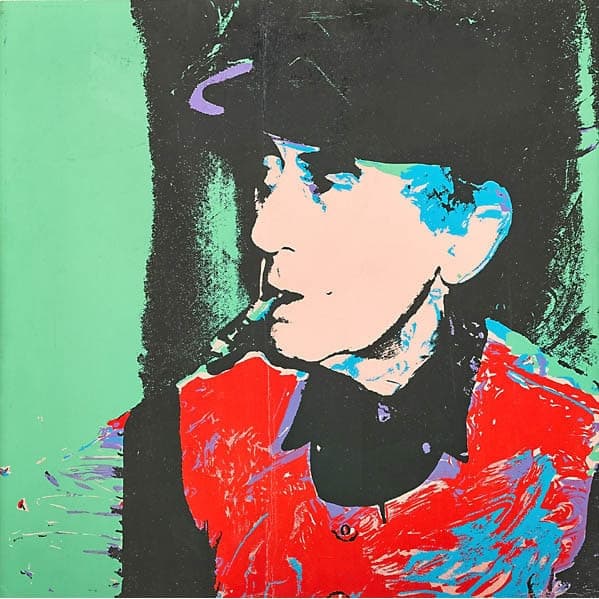
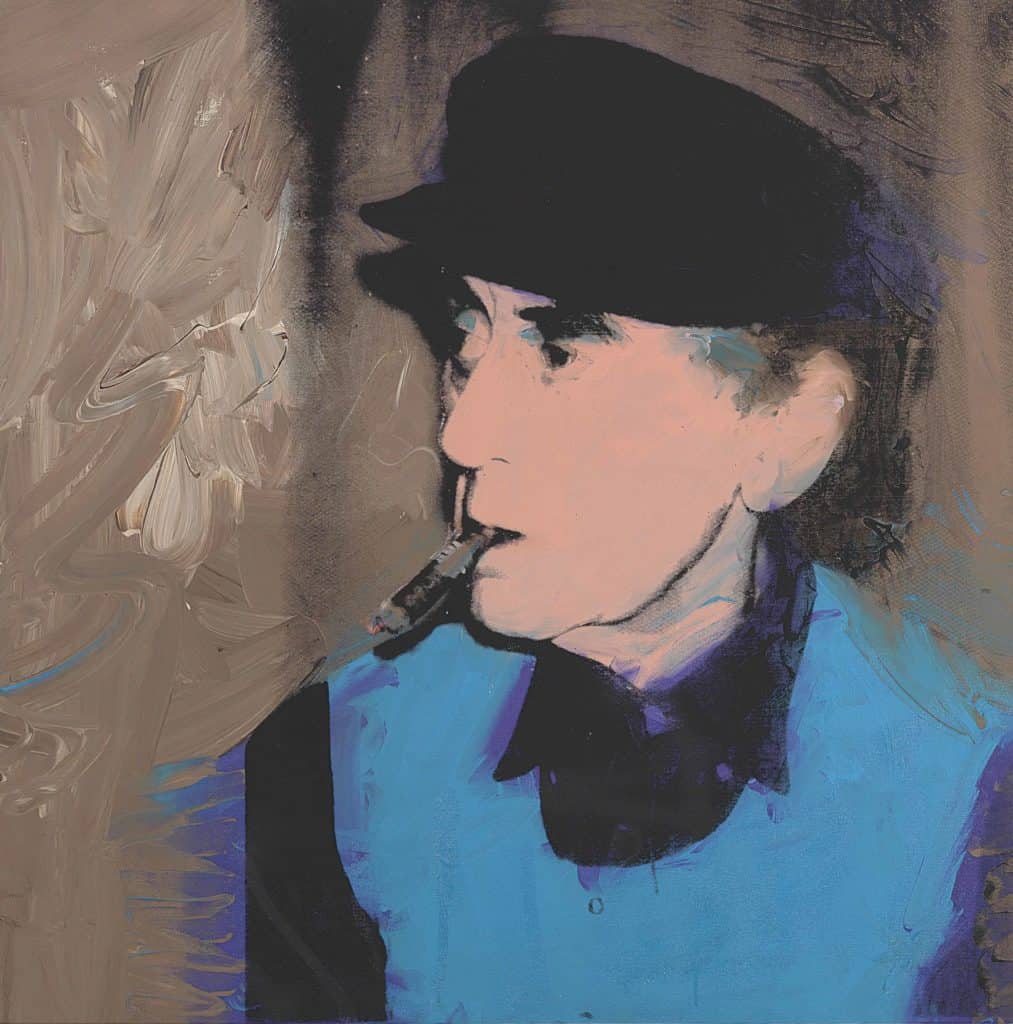
Throughout his career, Warhol did not solely work on commissioned portraits, but as he broadened his choice of subject matter in the 1970s and 1980s, he started to create images of the people he deeply admired, in particular fellow artists. Dada artist Man Ray was one of Warhol’s heroes, he based his portrait on a Polaroid picture he took of him in 1973. Warhol also painted portraits of artists with whom he developed a close friendship, including Jean-Michel Basquiat and Yves Saint-Laurent.
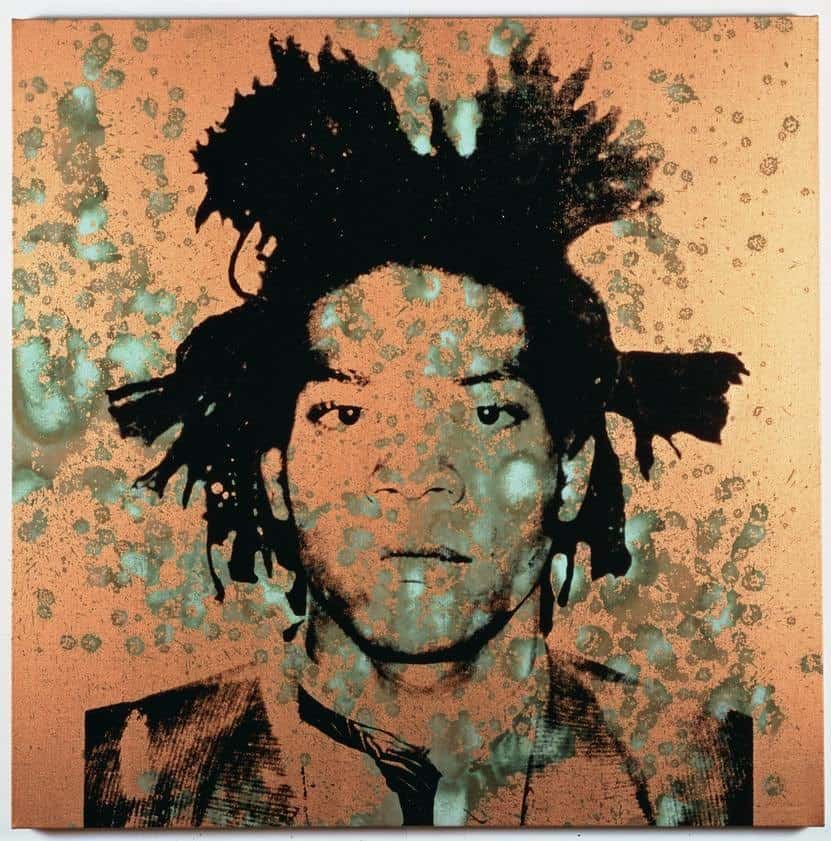
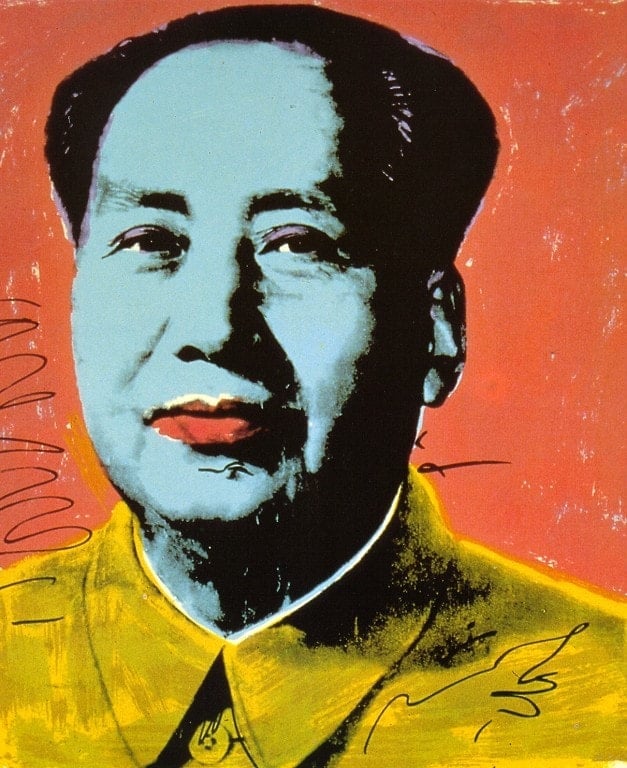
Among Warhol’s most popular portraits, Mao Zedong was painted in 1972. Bruno Bischofberger, Warhol’s long-time dealer, was the one suggesting the idea of a portrait of one of the most important political figures of the 20th century. After reading in Life Magazine that Mao was indeed the most famous person in the world, Warhol was drawn to the idea of creating his portrait, thus renewing his focus on fame and celebrity. Between 1972 and 1973, Warhol created 199 Mao paintings in flamboyant colours, suggesting a parallel between propaganda and capitalist advertising. Similarly, Warhol later conceived a series of portraits of Bolshevik Revolutionary Vladimir Lenin, playing with the boundaries between fame and political agenda. These Lenin paintings were the last major body of work Warhol completed prior to his death in 1987.
Portrait Series
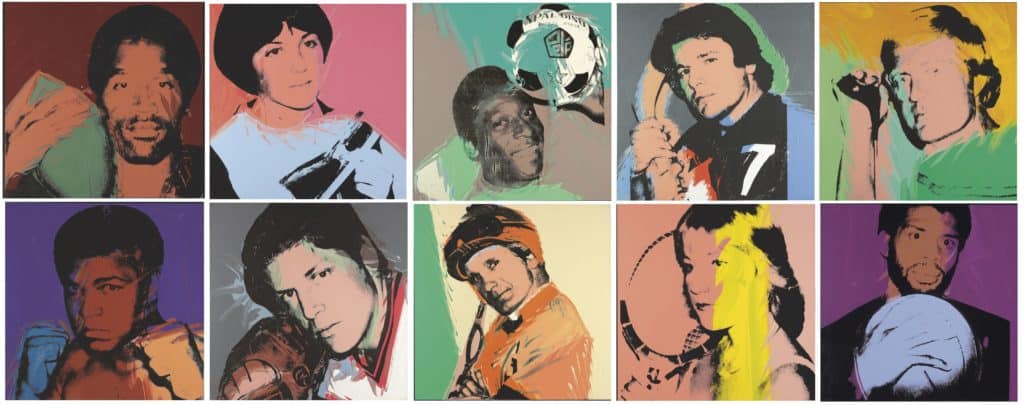
Often commissioned, Andy Warhol also worked on portrait series throughout his career, such as the Ten Portraits of Jews of the Twentieth Century series of 1980 and the 1985 Reigning Queens series, which included images of the four female monarchs who were ruling at that particular moment in time – Queen Elizabeth II, Queen Beatrix of the Netherlands, Queen Margrethe II of Denmark and Queen Ntombi Twala of Swaziland. Warhol also worked on his Athletes series between 1977 and 1979, which, just like the Reigning Queens and Ten Portraits of Jews of the Twentieth Century series, focused on fame and celebrity.
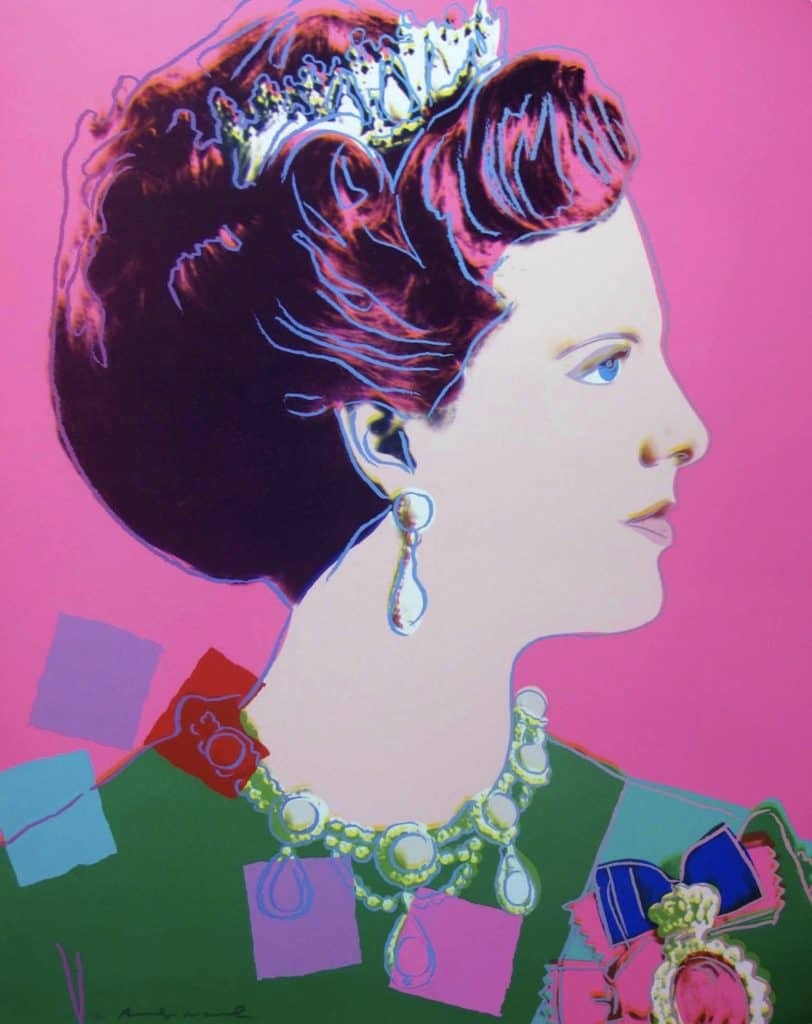
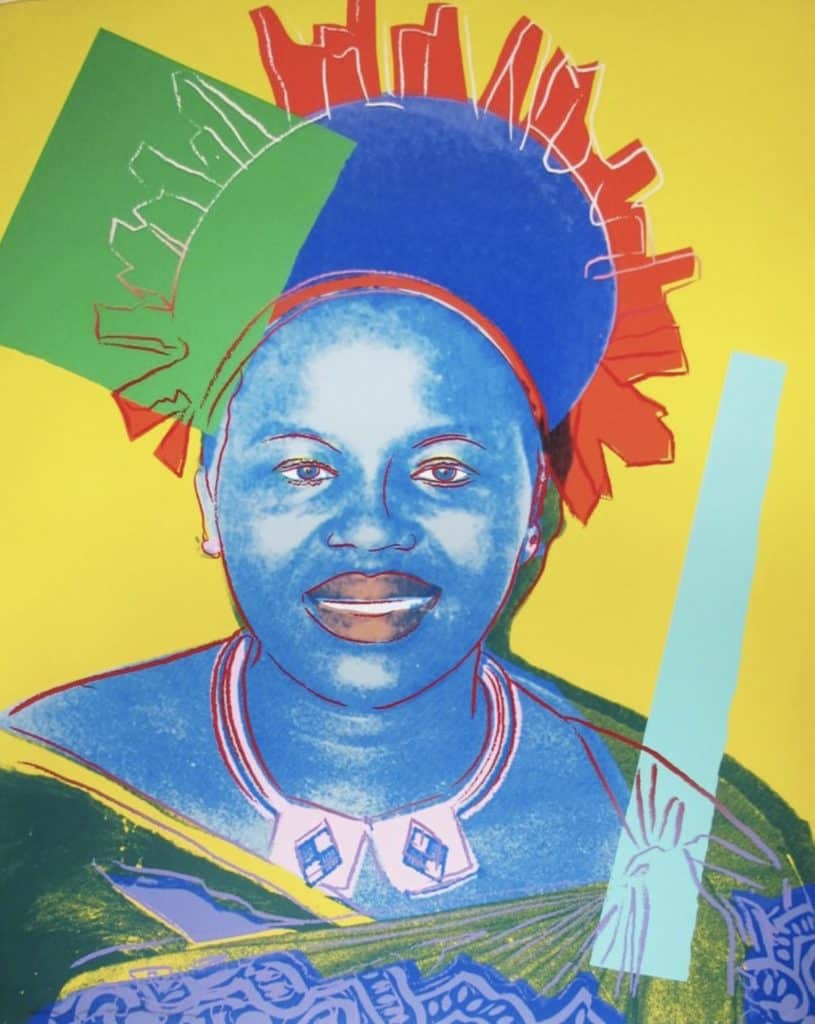
One of Warhol’s most poignant series was Ladies and Gentlemen, redefining perceptions of gender and calling attention to the marginalized drag queen community of the lower Manhattan. After the Stonewall Riots of 1969, and following the death of Factory Transvestite Superstar Candy Darling, Warhol was commissioned by Italian art dealer Luciano Anselmino in 1974 to paint 105 portraits of drag queens, in four different sizes. Eager to explore this particular subject matter, Warhol created more than double the number of portraits commissioned, taking over 500 Polaroids with 14 different models, and explored the subject through multiples format.
Local drag queen and actress Wilhelmina Ross in particular appears in 73 of Warhol’s portraits, embodying both the glamour of his pop aesthetic and his preparedness to embrace marginalised sub-cultures.
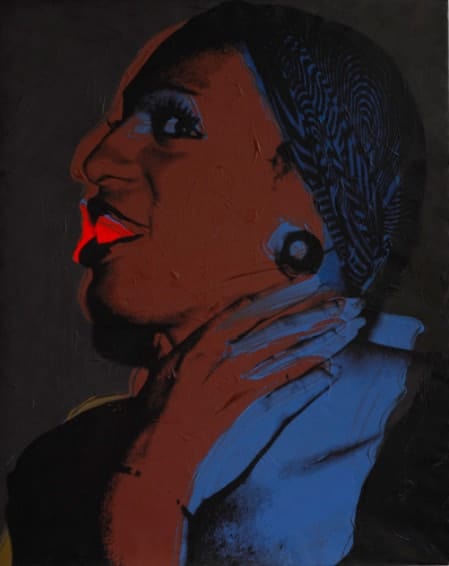
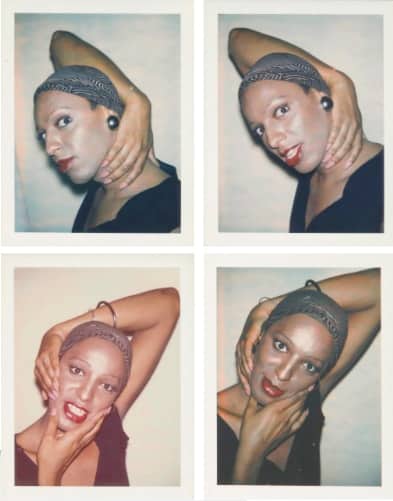
Self-Portraits
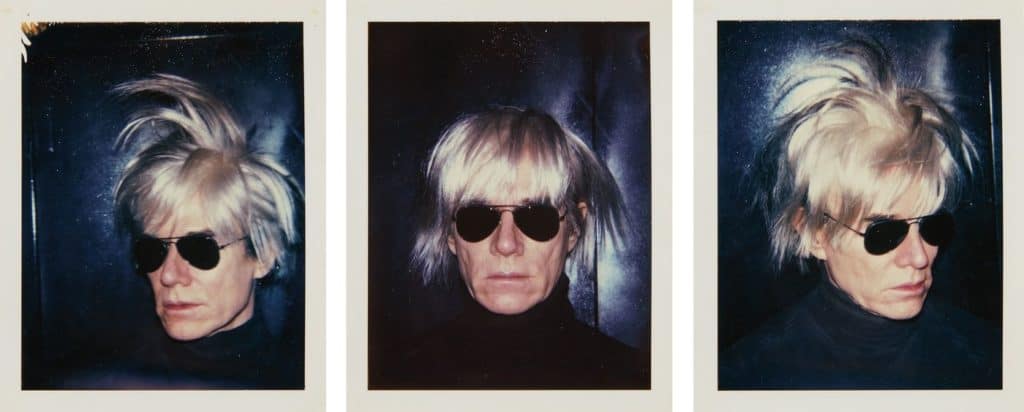
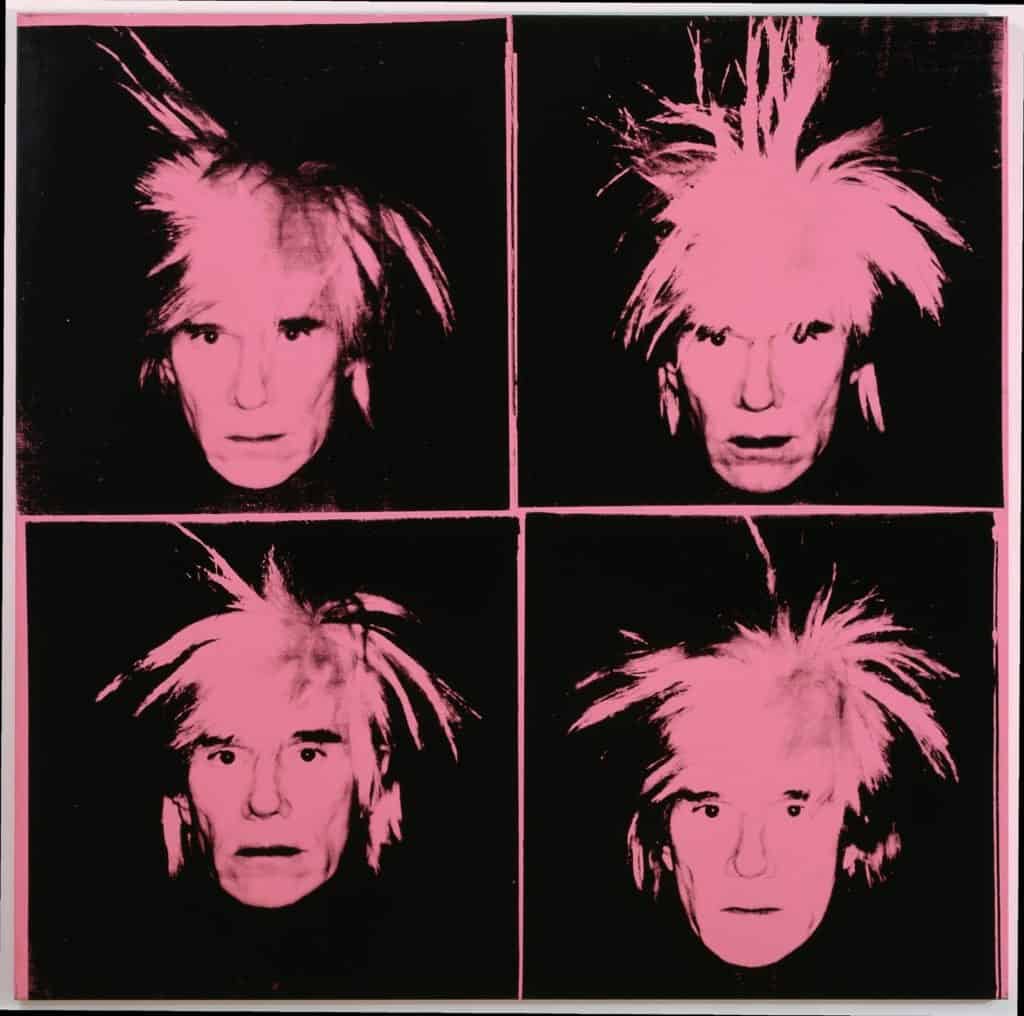
Images of Andy Warhol himself are just as popular as his art. The pop artist spent his life redefining the image he would present to the world through self-portraits – from his early photo-booth-style portraits of 1963, to his spectral Self-Portrait with Fright Wig of 1986, taken just a few months before his unexpected death.
Self-portraiture has always been a classic art-historical practice, and was an extremely important element of Warhol’s body of work. Conscious of the superficial nature of fame in society, Andy Warhol endeavoured to create a compelling public image, fashioning his own ‘brand’, and thus cultivating his own celebrity. Drawing on his trademark dark glasses and straight, blonde hair, Warhol often wore disguises or accentuated certain aspects of his appearance, emerging as a caricature of himself, virtually fabricating his own image. From self-consciousness to a man haunted by the inevitability of death, Warhol’s numerous self-portraits shift back and forth between vulnerability and confidence, superficiality and depth, equally asserting his obsession with both fame and mortality.
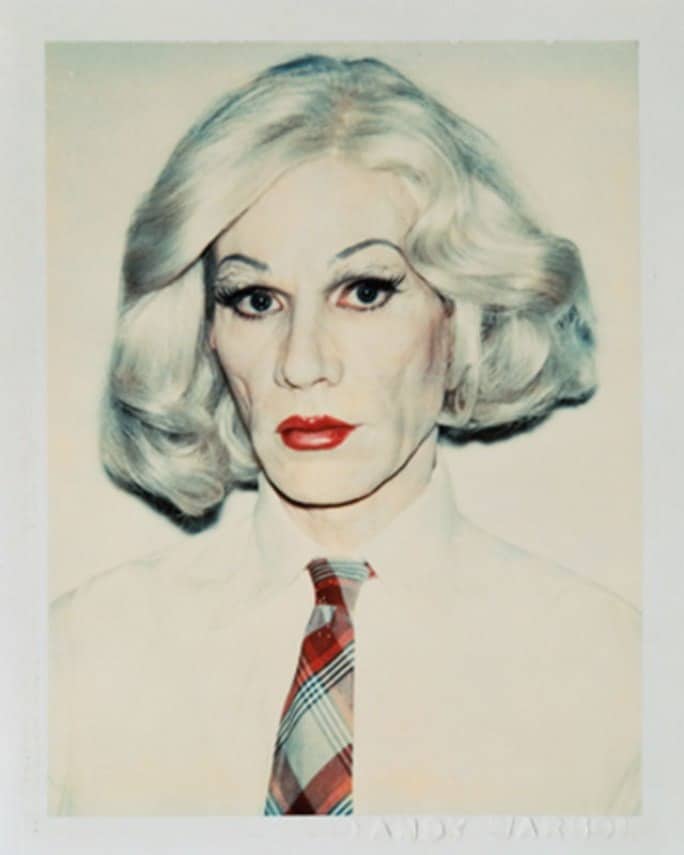
Relevant sources to learn more
Read about Silk Screen Printing
Why did Donald Trump refuse to buy Warhol’s commissioned painting of the Trump Tower?
The Andy Warhol Museum
Read about the friendship between Debbie Harry and Andy Warhol


